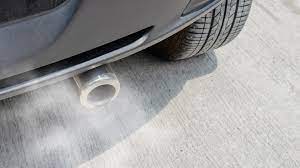Bath is to become one of the first cities outside London to introduce car parking charges based on a vehicles’ emissions.
The move, which takes effect from next Friday, September 8, in the eight car parks owned by Bath & North East Somerset Council (B&NES), is the latest in the city aimed at improving its air quality.

The council, which 18 months ago introduced the first charging Clean Air Zone (CAZ) of its kind outside the capital, said its emission-based charging structure would only affect motorists with more polluting vehicles.
Many drivers, it argues, will not face any change in the price they pay.
Eight councils in London, including Kensington and Chelsea, already operate a similar scheme, with a number also using it for residents’ parking permits.
The price of using B&NES’ car parks will depend on vehicle emissions, in line with the bands used for DVLA vehicle exercise duty.
There will be no increase in charges for non-diesel vehicles with emissions below 131g/km. More polluting vehicles, such as those using diesel, will now pay a higher rate.
Liberal-Democrat controlled B&NES said the move aimed to incentivise those with more polluting vehicles to use more sustainable alternatives when visiting the city centre, such as park & ride, while also encouraging a shift to public transport, walking, wheeling and cycling.
The council is replacing all its existing car park parking payment terminals to enable drivers to enter their vehicle registration numbers so their charge can be automatically calculated. They can then pay via MiPermit, cash or card.

The council is also replacing signage in its car parks to reflect the new charging structure.
In a recent public consultation carried out by B&NES, more than half the 1,692 responses voiced concerns about air quality and felt the council should do more to tackle air pollution.
The council also said while a number of other local authorities across the country that had introduced emission-based charges, it was the only one continuing to offer a cash payment option, which it said provided flexibility and made it easier to pay.
B&NES cabinet member for transport Cllr Manda Rigby, pictured, said: “Prices won’t change for a lot of drivers. These new charges will only affect people bringing more polluting vehicles into our city.
“This approach is being adopted across the country but we’re the only council remaining committed to offering cash payments for customers. We see it as really important to protect this.
“Our overall aim is to improve public safety by improving air quality and reducing congestion and I’d like to thank all that took part in the consultation and shared their views with us.
“Air pollution currently causes up to 36,000 deaths in the UK each year and the consultation responses show residents are concerned about the air quality in Bath, which these changes will help improve.
“Introducing these new charges will also support our journey to net zero ambitions, builds on the progress made by the Clean Air Zone.”
The emission-based charging structure will also be applied to car park season tickets, however there will be no increase for existing season ticket holders for 12 months.
Parking at the council’s three park & ride sites will remain free for those using the bus service, which it said would help encourage their use while reducing the number of cars entering the city centre.
Foreign registered or vehicles not registered with the DVLA will be charged the highest price for the chosen duration. This is to encourage visitors to use sustainable alternatives such as park & ride.
Car parks where emission-based charges will apply are Avon Street, Bath Sports & Leisure Centre, Cattlemarket, Charlotte Street, Claverton Street, Green Park Road, Kingsmead Square and Manvers Street.
Motorists can check their vehicle’s emissions here, although they do not need to know their vehicle emissions or engine size when paying for their stay.
Bath’s CAZ charges non-compliant taxis, vans, buses and larger commercial vehicles to enter – but not private cars or motorbikes.
The council said that within six months of its launch the number of high-emission vehicles in the city centre had halved, driving down the city’s previous high levels of nitrogen dioxide (NO2) pollution.



















